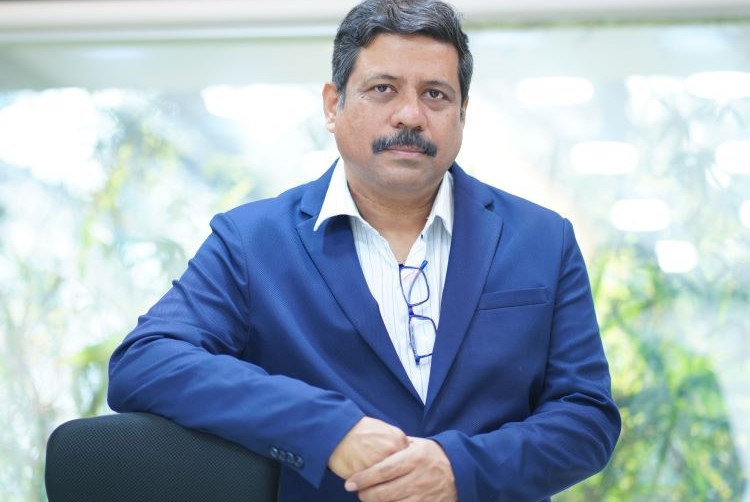Unveiling Innovations in Packaging:
A Dialogue with Mr. Rajesh Khosla, CEO of AGI Greenpac, on Shaping Sustainable Solutions and Embracing Industry Trends
Tell us about your company’s expertise and experience in providing packaging solutions specifically tailored for the food and beverage industry.
At AGI, we’ve established ourselves as a leading provider of comprehensive packaging solutions. Our expertise spans a broad spectrum, including glass packaging products, specialized glass formulations, PET bottles, and the production of secure, anti-counterfeit caps and closures. Notably, we possess in-depth experience catering specifically to the food and beverage industry.
We understand the critical role packaging plays in the food and beverage sector. Maintaining product freshness, safety, and extended shelf life are paramount concerns. AGI addresses these challenges head-on by designing and manufacturing packaging solutions specifically tailored to the unique needs of food and beverage products.
Furthermore, we recognize the growing emphasis on sustainable practices within the industry. In response, AGI offers a robust portfolio of eco-friendly packaging options, including reusable solutions that align with evolving sustainability trends. Our dedication to continuous research and development ensures we remain at the forefront of innovation, consistently developing solutions that not only meet but exceed the sustainability expectations of our food and beverage clients.
As consumer demand for sustainable packaging options continues to rise, how do you perceive the evolving trends in food and beverage packaging? How is AGI Greenpac responding to these trends, and what strategies are being implemented to stay ahead in the market?
The trends in food and beverage packaging are shifting towards sustainability due to increasing consumer awareness and demand for eco-friendly options. Consumers are seeking packaging alternatives that minimize waste, use renewable resources, and are recyclable or biodegradable. AGI Greenpac is likely responding to these trends by prioritizing sustainability in their packaging solutions. Strategies may include:
- Reducing Environmental Impact: By implementing measures to reduce the environmental footprint of packaging production processes, such as optimizing energy usage, water positivity, and reducing greenhouse gas emissions.
- Consumer Education: Focusing on educating consumers about the importance of sustainable packaging and how they can make environmentally conscious choices when selecting products.
- Marketing & Branding: Incorporating sustainability into brand identity and marketing strategies has helped/helps AGI Greenpac differentiate ourselves in the market and appeal to eco-conscious consumers.
- Material innovation: By investing in research and development to create packaging materials that are eco-friendly, such as biodegradable materials, or recyclable alternatives to traditional packaging.
- Collaboration & partnerships: By partnering with suppliers, recyclers, and other stakeholders to create a closed-loop system for packaging materials, ensuring that they can be recycled or reused effectively.
What do you envision as the future of eco-friendly packaging, and what potential economic and environmental benefits do you foresee for companies that embrace sustainable practices? How does AGI Greenpac aim to capitalize on these opportunities?
To envision the future of eco-friendly packaging and its potential benefits for companies, we can anticipate a landscape where sustainability becomes the norm rather than the exception. As consumer and governmental attitudes continue to shift towards environmental consciousness, the demand for eco-friendly packaging solutions is poised to soar. This trend is underscored by projections from BIS Research, indicating that the sustainable packaging industry in India alone is expected to reach Rs.57,000 crore by 2025. Embracing sustainable practices in packaging offers numerous economic and environmental advantages for businesses.
Firstly, it can lead to cost savings in the long run, as sustainable materials and processes become more efficient and cost-effective over time. Additionally, by reducing waste and minimizing environmental impact, companies can enhance their reputation and appeal to eco-conscious consumers. This, in turn, can drive brand loyalty and customer trust, ultimately translating into increased sales and market share. Furthermore, adopting sustainable methods positions businesses to navigate and succeed in an increasingly regulated and environmentally conscious global market. As governments worldwide implement stronger environmental restrictions and consumers demand more sustainable products, companies that proactively embrace eco-friendly practices will be better equipped to comply with regulations and meet consumer expectations.
From an environmental perspective, the benefits of eco-friendly packaging are significant. By reducing reliance on non-renewable resources, minimizing waste generation, and lowering carbon emissions, sustainable packaging contributes to mitigating climate change and preserving natural ecosystems. AGI Greenpac aims to capitalize on these opportunities by continuing to innovate and lead in the development of eco-friendly packaging solutions. Through ongoing research and development efforts, the company seeks to introduce cutting-edge materials and technologies that meet the highest standards of sustainability and performance. By partnering with clients to understand their unique needs and challenges, AGI Greenpac delivers tailored solutions that not only meet but exceed expectations for eco-friendly packaging.
Moreover, AGI Greenpac prioritizes transparency and accountability in its operations, ensuring that its packaging solutions adhere to the strictest environmental standards and certifications. By fostering a culture of sustainability and responsibility, AGI Greenpac sets itself apart as a trusted partner for companies looking to embrace sustainable practices and thrive in a greener future.
How do AGI Greenpac’s advancements in bio-based materials, and extended shelf-life technology benefit beverage companies? Specifically, how do these innovations contribute to reducing carbon footprint, prolonging product shelf life, and positively influencing consumer perception within the industry?
- AGI Greenpac’s advancements in bio-based materials and extended shelf-life technology offer significant benefits to beverage companies across several key areas:
- Reducing carbon footprint: By utilizing bio-based materials for packaging, AGI Greenpac helps beverage companies reduce their reliance on fossil fuels and minimize carbon emissions associated with traditional packaging materials. Bio-based materials are often derived from renewable resources, such as plant-based polymers, which have a lower environmental impact compared to conventional plastics derived from petroleum.
- Prolonging Product shelf life: AGI Greenpac’s extended shelf-life technology can enhance the preservation of beverages, reducing food waste and improving overall product quality. This technology helps beverage companies maintain the freshness and taste of their products for longer periods, allowing for extended distribution and storage without compromising on quality. As a result, beverage companies can minimize product spoilage and optimize their supply chain efficiency.
- Positive consumer perception: Consumers are increasingly concerned about the environmental impact of packaging and the quality of the products they purchase. By adopting bio-based materials and extended shelf-life technology, beverage companies can align with consumer values and demonstrate their commitment to sustainability and product quality. This can enhance brand reputation, foster customer loyalty, and attract environmentally conscious consumers who prioritize eco-friendly packaging and fresher products.
While there are clear benefits to eco-friendly packaging, what are some of the challenges companies face in adopting these solutions. How does AGI Greenpac support its clients in navigating these challenges and transitioning towards more sustainable packaging options?
In today’s environmentally conscious consumer landscape, the adoption of eco-friendly packaging solutions has become increasingly imperative for companies across industries. While the benefits of sustainable packaging are undeniable, such as reducing environmental impact and meeting consumer demand for greener products, companies often face several challenges in implementing these solutions.
Cost: Eco-friendly packaging materials and technologies can sometimes be more expensive than conventional alternatives. Companies may face initial higher costs for sourcing sustainable materials, implementing new production processes, or investing in research and development.
- Supply chain complexity: Sourcing bio-based or recycled materials may introduce complexity into the supply chain, including issues related to availability, consistency, and quality of materials. Companies may need to establish new supplier relationships or modify existing ones to ensure reliable access to sustainable materials.
- Technical performance: Eco-friendly packaging materials may have different properties compared to conventional materials, such as strength, durability, or barrier properties. Ensuring that sustainable packaging meets the technical requirements for product protection, transportation, and shelf life can be a challenge for companies
- Consumer acceptance: Despite growing consumer interest in sustainability, there may still be concerns or misconceptions about eco-friendly packaging materials, such as perceptions of inferior quality or effectiveness. Companies need to communicate the benefits of sustainable packaging effectively to consumers and address any potential resistance or scepticism.
- AGI Greenpac supports its clients in navigating these challenges and transitioning towards more sustainable packaging options through several strategies:
- Consultative Approach: AGI Greenpac collaborates closely with clients to understand their specific needs, goals, and challenges related to sustainable packaging. By offering personalized consulting services, AGI Greenpac can provide tailored solutions that address clients’ unique requirements and constraints.
- R&D : AGI Greenpac invests in research and development to continuously innovate and improve sustainable packaging solutions. By developing new materials, technologies, and manufacturing processes, AGI Greenpac helps clients stay ahead of the curve and overcome technical challenges associated with eco-friendly packaging.
- Supply chain management: AGI Greenpac works closely with network of suppliers and partners to ensure a reliable and sustainable supply chain for eco-friendly materials. By leveraging its industry expertise and relationships, AGI Greenpac helps client’s access high-quality sustainable materials and navigates supply chain complexities effectively.
- Education & Communication: AGI Greenpac educates clients and consumers about the benefits of sustainable packaging and provides transparent information about the environmental impact of different packaging options. By raising awareness and fostering understanding, AGI Greenpac helps clients build trust with consumers and drive demand for eco-friendly products.
Can you share any specific examples or case studies where AGI Greenpac’s eco-friendly packaging solutions have made a tangible difference for its clients. How does the company measure the success and impact of its sustainable initiatives both economically and environmentally?
We have entered into agreements with our customers to utilize their final shippers for packing bottles at our end. These shippers are then reused by the customers for shipping their final products, resulting in a significant reduction in paper consumption. This initiative is currently underway with our clients. We aim to extend this practice to other customers too.
Additionally, we have implemented an initiative concerning pallets, whereby we are transitioning from single-use pallets to a rental pallet system. This system allows for pallets to be recycled multiple times. Presently, we are employing the rental pallet system India and plan to implement it with others as well.


